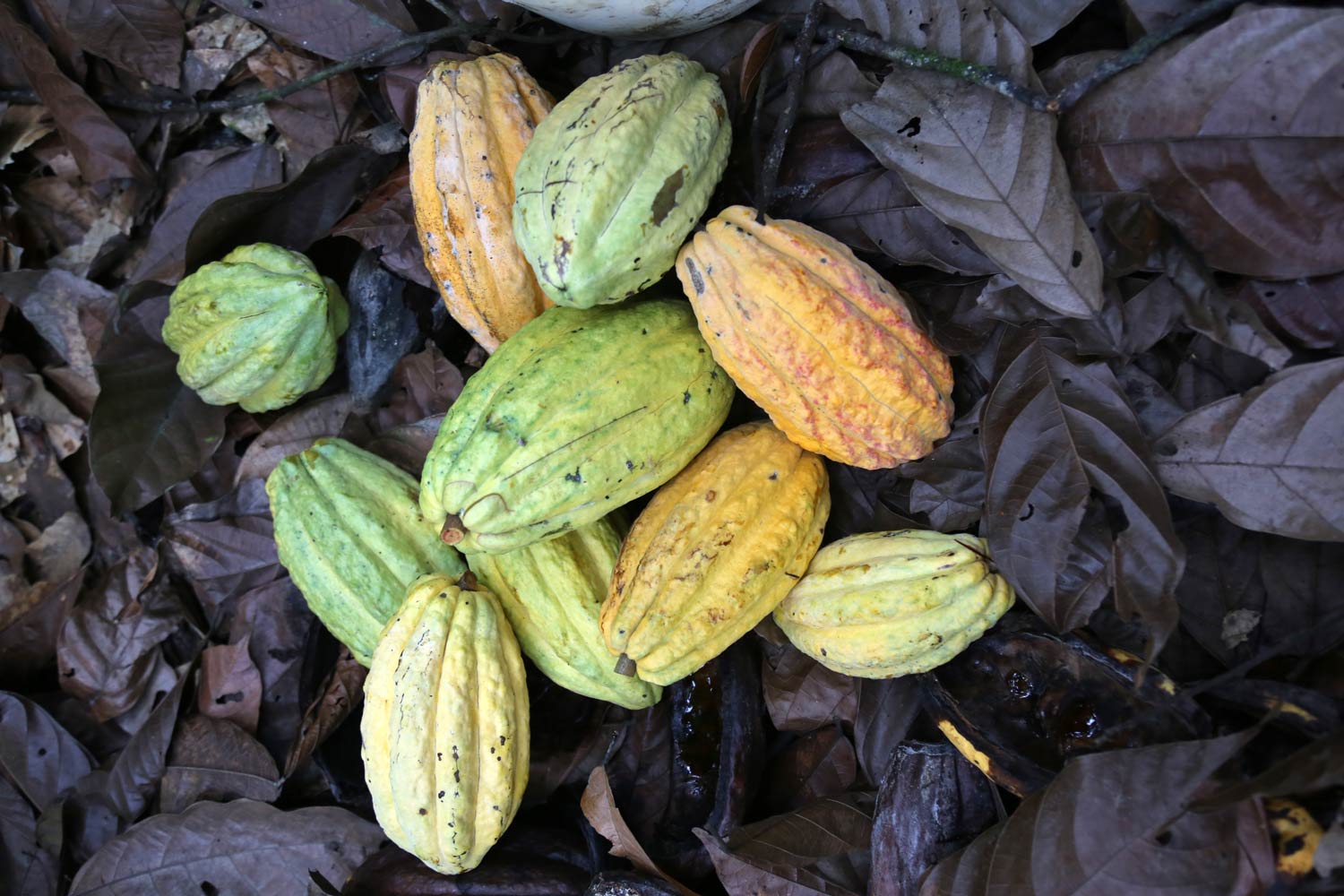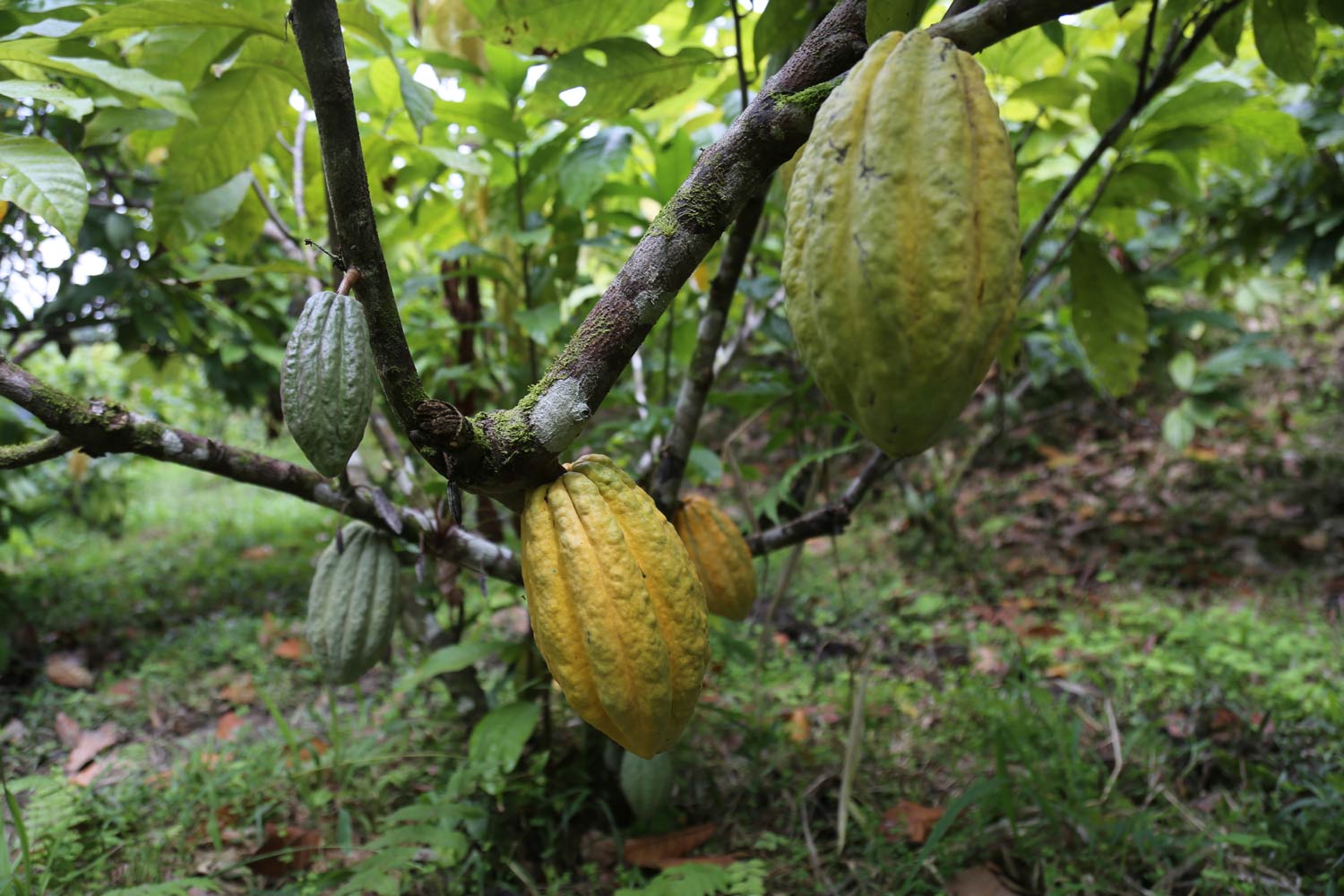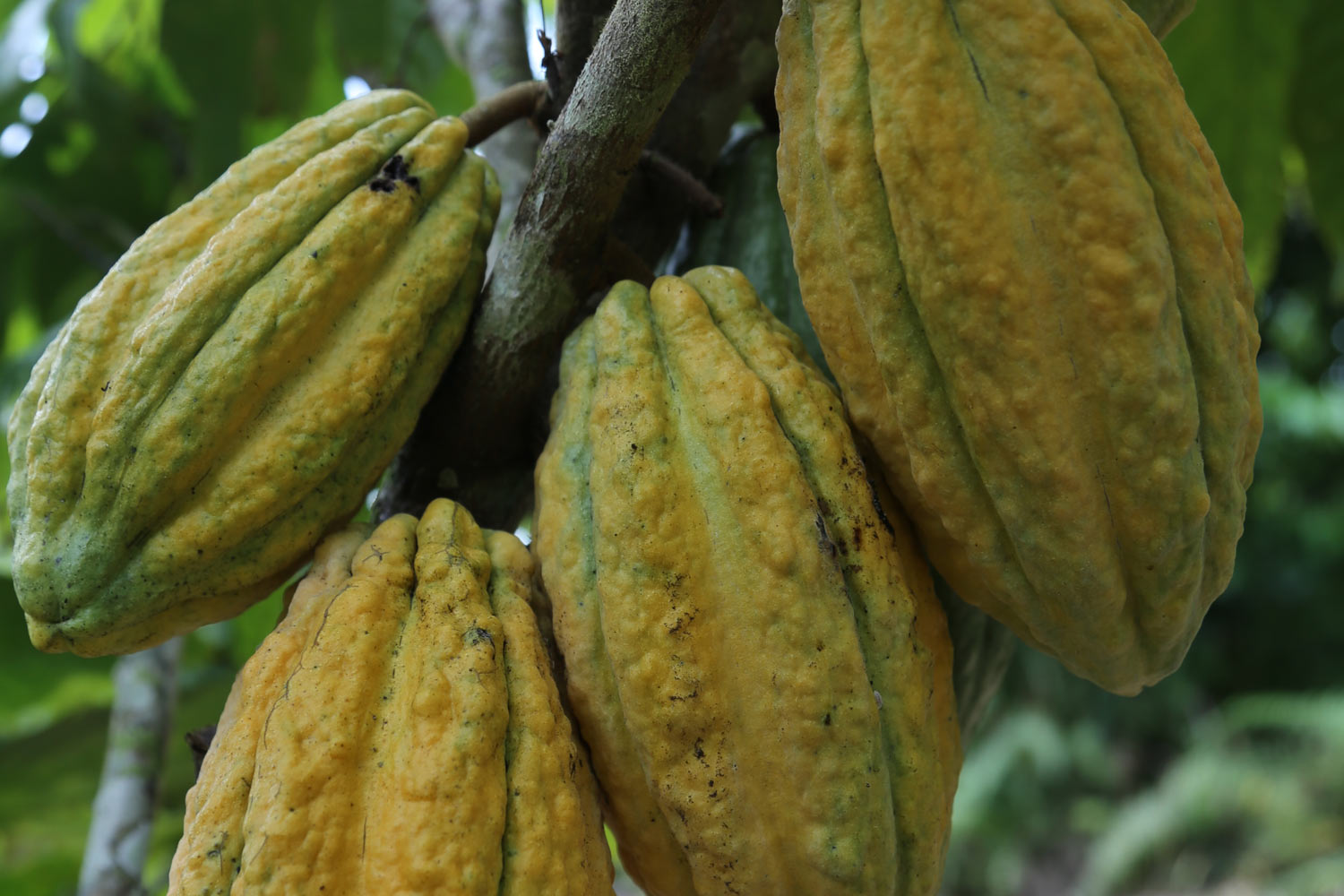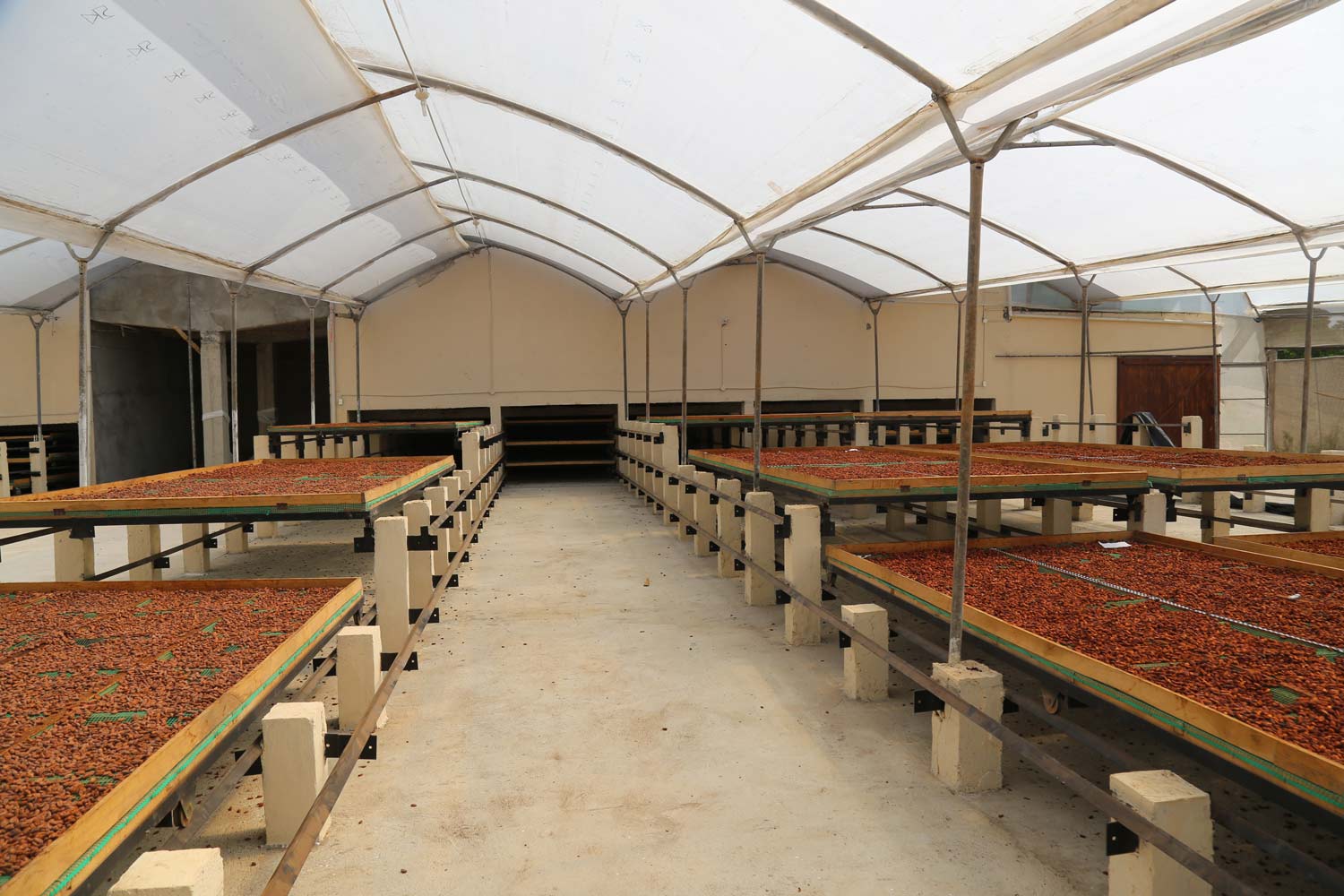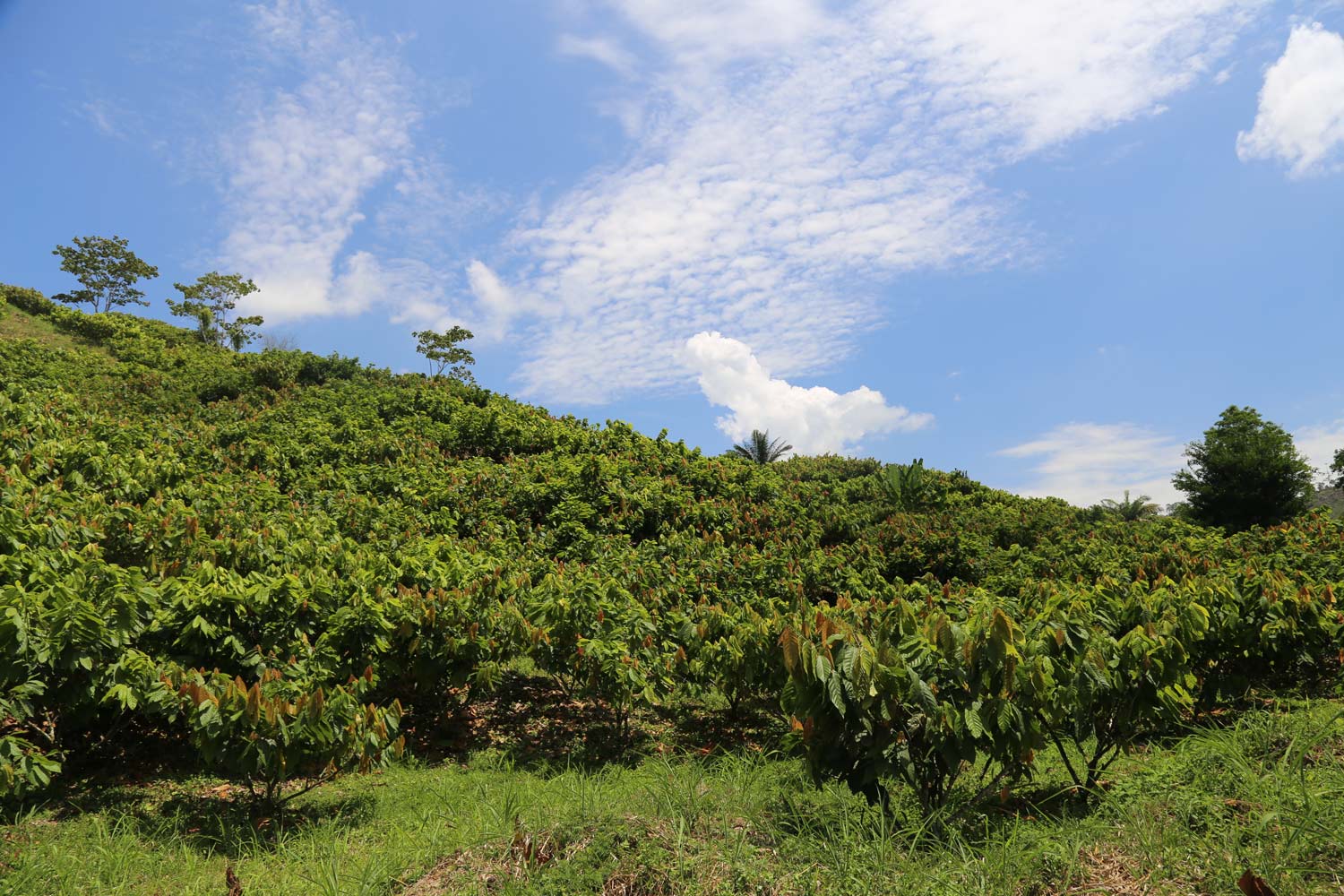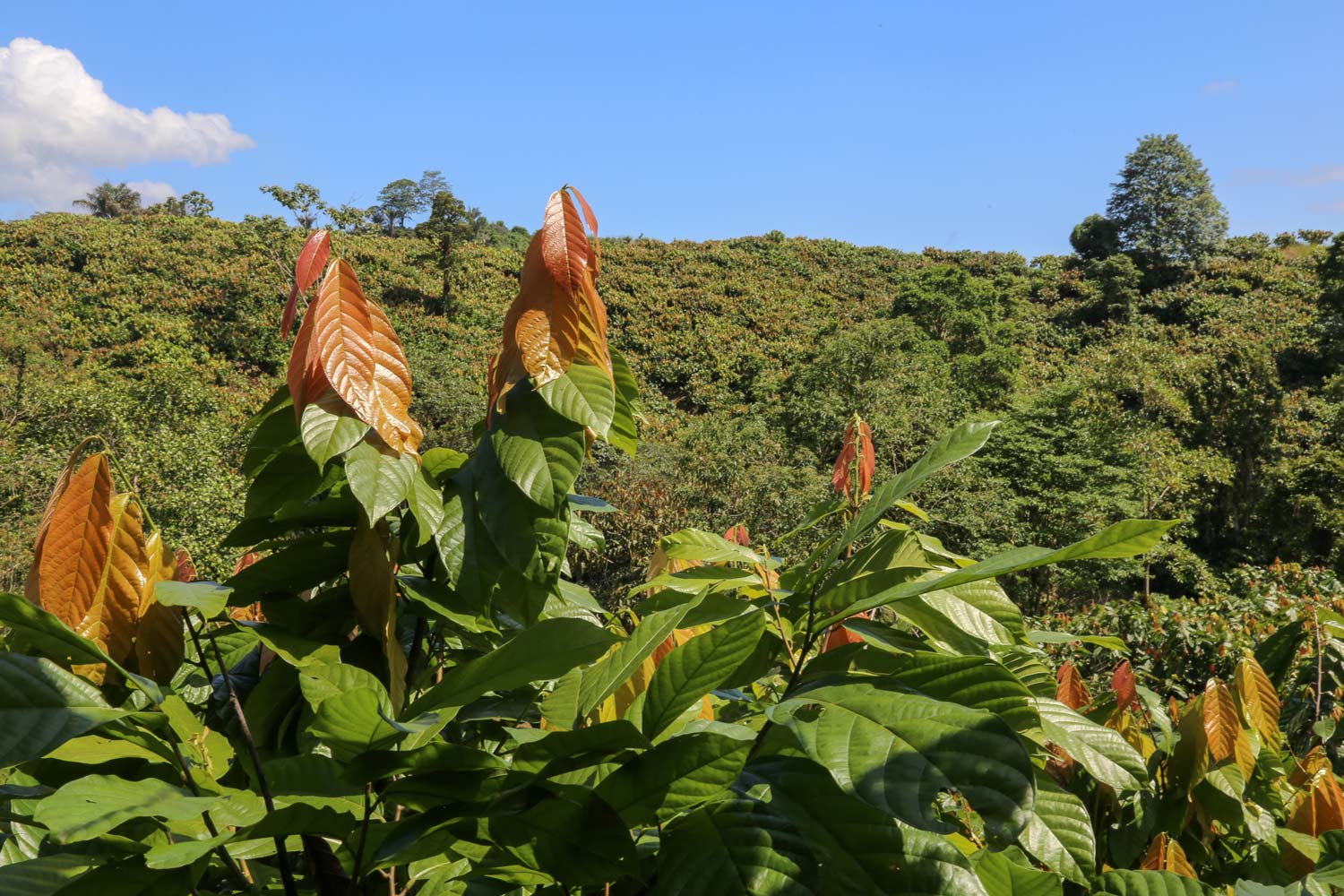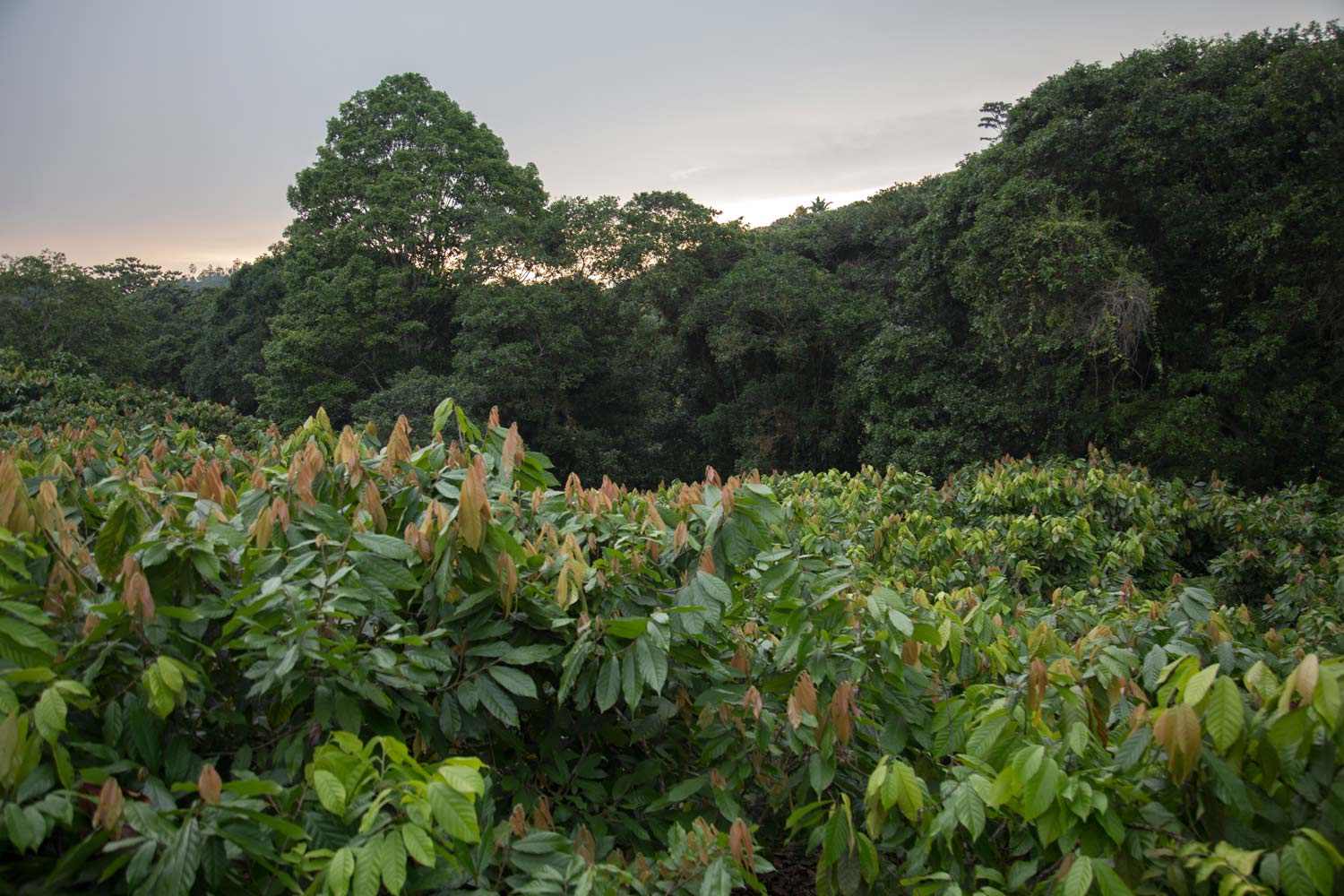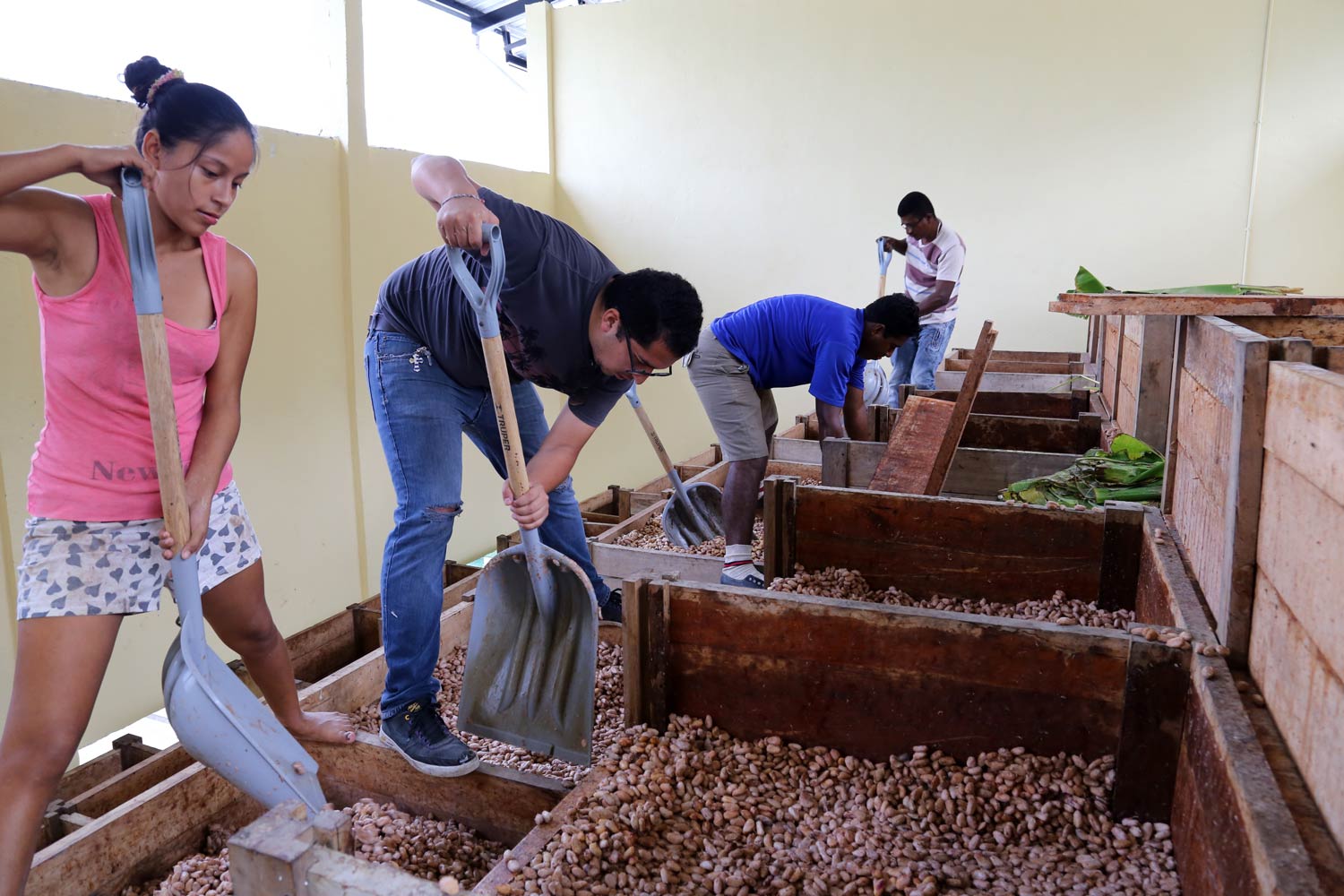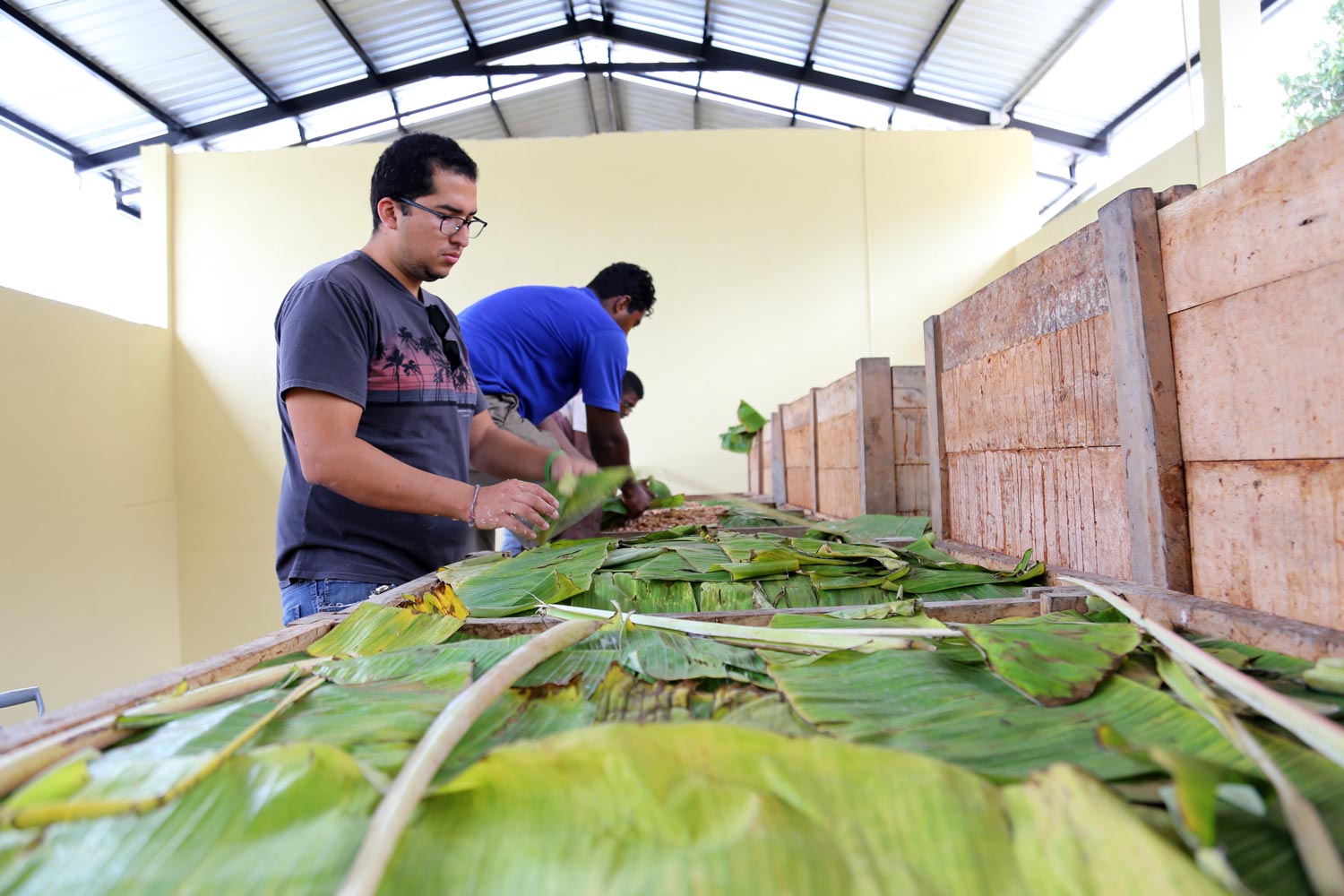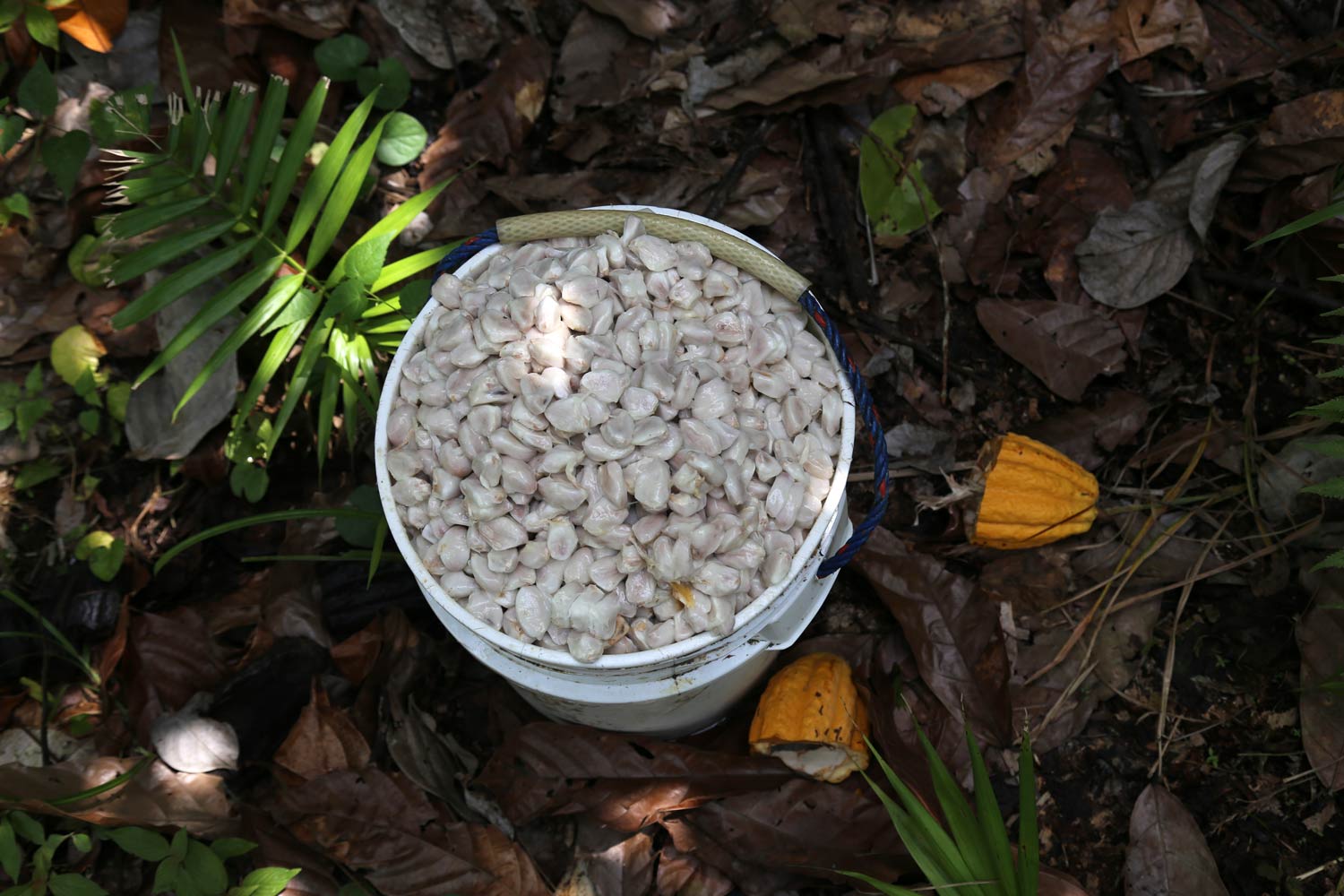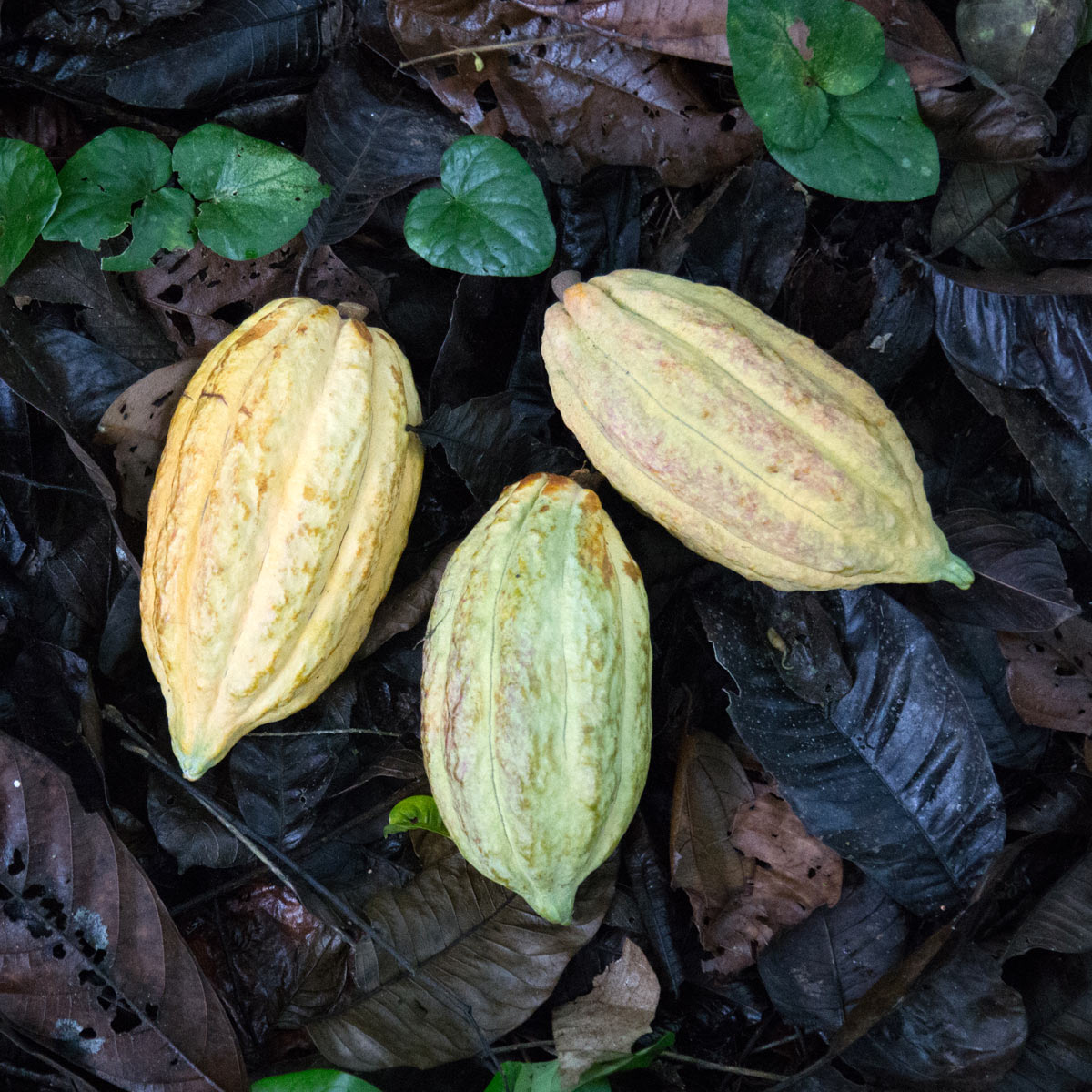
Request info
Fill in the form to request information for placing an order, availability, pricing and/or logistics.
Pay online through PayPal
Flavor
Strong base chocolate, roasted nuts, light fruit and floral notes. Low acidity and very low bitterness and astringency.
Physical aspects
Large, uniform size beans. 70 beans/100 grams. Exceptionally clean red-brown beans.
Genetics/Cultivars
Ecuadorian Nacional hybrids: EET-95, EET-96, EET-103
Notes
All cacao fruits are harvested, broken, and placed into fermentation boxes on the same day.
Source Details
Raw Material Source
Single estate. Less than 10 miles inland from the town of Muisne in the Esmeraldas province. Cacao orchards were established six years ago on former cattle pasture with very steep terrain. Establishment of cacao, timber, and other fruit trees has reduced erosion on the farm site. Esmeraldas has an unusual climate, with little variation in average temperatures. The region has relatively short wet season from January to May each year, but during the dry season, the weather is almost always overcast with light drizzling rain.
Owners, Management & Employment
Costa Esmeraldas is a family owned and operated 100-hectare cacao farm. All members of the Salazar family (Fredy, Monica, and siblings Freddy and Indira) actively participate in the cacao business. Freddy is directly responsible for managing operations at the farm and post-harvest center.
Management of the cacao orchards create over 40 full-time jobs within the local community in rural Esmeraldas.
Harvest Season
In Esmeraldas, on typical years, the Nacional hybrid trees bear fruit from June to February with peak harvest July through September.
Food Safety Tests
Laboratory details
Fat Content
- 55.18%
Microbial
- SPC: 3,100 cfu/g
- Coliforms & E. coli: <3 mpn/g
- Salmonella: Negative
- Listeria: Negative
- Yeast: <10 cfu/g
- Mold: <10 cfu/g
Cadmium
- Whole beans: 2.35 – 3.16 mg/kg (ppm)
- Cocoa mass (100%): 2.37 mg/kg (ppm)
Ochratoxin A
- OTA: none detected
Roasting & Processing Suggestions
Flexible roasting profiles. Lighter roasts bring out some mild dried/red fruit notes. Darker roasts yield stronger base cocoa notes and nutty character.
Origin Visits
Chocolate makers using Costa Esmeraldas beans, or those interested in learning more about the farm and process are welcome to schedule a visit to Ecuador. Please contact us for details.
Post-Harvest Handling
Site & Design
The post-harvest facility is built on a nearby off-farm site with an unusually dry and sunny micro-climate which greatly limits mold development and bacterial spoilage during the drying process. A brand-new fermentation facility was designed to maximize quality and consistency in processing while also using efficient design features to minimize worker fatigue and injury risk.
Fermentation
Five-tiered cascade system. Cedro (Cedrela odorata) wood boxes with ~450 kg capacity. The fermenting mass is turned once at 36 hours, and then every morning until fermentation is complete. Total duration of fermentation is 5 ½ days.
Drying
All cacao is sun dried on sliding mesh racks. High-walled polyethylene tunnels cover all drying structures. Gradual drying is practiced during the first three days. Finish-drying to a moisture content of 7% is on concrete patios.
Grading
On every harvest day, each fermentation box is assigned an ID number. After fermentation and drying, cacao is sampled drawn from each ID number and is evaluated on appearance, aroma, and fermentation level. Only cacao that meets our quality standard is retained and blended for our export grade product.
Aging
All dry cacao is stored in breathable jute bags for at least two months to allow oxidation and volatilization of acidity. After aging, beans are checked for moisture content, and if necessary, spread for re-drying. To prevent moisture ingress, contaminating aromas, and insect infestation, all aged cacao is stored and shipped in GrainPro-lined jute sacks.
Blending
Once we have a full container load (12.5 MT) of graded cacao in storage, we evenly blend all export grade beans so that once chocolate makers determine a roasting profile and processing protocol, it can be predictably applied to each sack contained in a single order of cacao. Typically, each separate fermentation and drying lot produces four to five sacks of finished cacao. In our facility, it’s possible to blend about three metric tons at a time, so we make four to five blends with one sack from each lot to produce a full container-load with a consistent composition.
Samples
After blending, we reserve enough samples from each lot to distribute to chocolate makers. As a result, we guarantee that any order will be an exact match to the sample provided.




